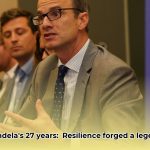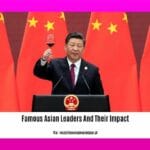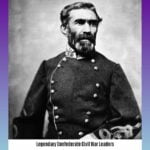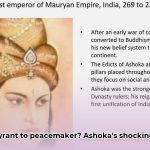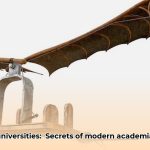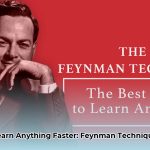Singapore’s transformation from a small island to a wealthy, global city-state is a compelling story of strategic vision and, at times, controversial implementation. This article dives into Lee Kuan Yew’s economic strategies, examining their profound successes alongside the debates they ignited. It’s a behind-the-scenes look at Singapore’s remarkable rise, weighing extraordinary achievements against valid criticisms, and exploring crucial lessons for other countries navigating today’s complex world.
Lee Kuan Yew: The Architect of Transformation and the Debated Strategies That Shaped Singapore
Lee Kuan Yew’s name is inextricably linked to Singapore’s dramatic economic ascent. His unique leadership style, characterized by a blend of pragmatic economic policies and, according to critics, authoritarian measures, continues to be intensely debated by economists, political scientists, and historians alike. A comprehensive understanding of Singapore’s transformation requires a nuanced examination of both its undeniable successes and the societal compromises that were made along the way.
Building a Magnet for Investment: A Deliberate and Calculated Strategy
At the time of its independence, Singapore faced a daunting challenge: a severe lack of natural resources. Lee Kuan Yew recognized this critical vulnerability and implemented a series of strategic initiatives designed to attract foreign investment on a massive scale. Key to this effort was the establishment of the Economic Development Board (EDB), a government agency tasked with creating a stable, predictable, and investor-friendly environment. The EDB offered a range of incentives to multinational corporations, including tax breaks, streamlined regulations, and guarantees of political stability. This approach fostered rapid expansion across various sectors. However, the critical question remains: was this extraordinary success solely attributable to strategic planning, or did external factors and a degree of fortuitous timing also play a significant role? Furthermore, what specific policies were most effective in promoting investment opportunities, and what unintended consequences did they produce?
Investing in People: Cultivating the Human Capital Advantage
Beyond attracting foreign investment, Lee Kuan Yew placed a paramount emphasis on investing in education and skills development for the Singaporean people, recognizing that human capital would be the nation’s most valuable asset. This involved cultivating a culture of discipline, hard work, and efficiency, which became deeply ingrained in Singaporean society. According to data from the World Bank, Singapore consistently ranks exceptionally high in human capital development indices, demonstrating the long-term impact of these strategic investments. However, some critics have argued that these methods were excessively strict and placed undue pressure on individuals. Therefore, it’s essential to consider the social and psychological implications of such intensive human capital development programs.
Infrastructure: Laying the Foundation for Sustainable Long-Term Growth
Recognizing the vital role of infrastructure in supporting economic activity, Lee Kuan Yew embarked on an ambitious program to construct world-class ports, a state-of-the-art international airport (Changi Airport), and an extensive public transportation network. These strategic investments significantly facilitated trade, tourism, and overall economic development. The World Economic Forum consistently ranks Singapore’s infrastructure as among the best globally, highlighting the effectiveness of this approach. However, these strategic improvements also came at a substantial cost in terms of government spending and potential opportunity costs.
The Authoritarian Element: A Pragmatic Necessity or a Democratic Deficit?
Central to Lee Kuan Yew’s approach was a prioritization of political stability and rapid economic growth, which, according to critics, sometimes came at the expense of fundamental freedoms and the suppression of dissenting voices. Critics frequently highlight the government’s suppression of political opposition and restrictions on freedom of speech. Supporters, on the other hand, justify these measures as a necessary evil, arguing that they were essential for maintaining national order and facilitating rapid national development during a critical period. This fundamental disagreement highlights the complex ethical dimensions of Lee Kuan Yew’s leadership and raises the perennial question: do the ends always justify the means, particularly when fundamental human rights are at stake?
Social Engineering: Building a Nation, One Home, One Community at a Time
The Housing Development Board (HDB) played a central role in Singapore’s social engineering efforts, providing affordable public housing to the vast majority of the population. This initiative fostered a sense of national identity and promoted social cohesion by integrating diverse ethnic groups within carefully planned communities. However, critics argue that this approach also limited individual choice and promoted social conformity. This raises fundamental questions about the appropriate balance between providing affordable housing and respecting individual freedom, as well as the potential trade-offs between social cohesion and social diversity. Today, the HDB has housed over 80% of Singapore’s resident population, showcasing its remarkable success in providing affordable and accessible housing.
The Central Provident Fund (CPF): A System of Savings with Benefits and Burdens
The CPF, Singapore’s mandatory retirement savings scheme, has been instrumental in ensuring retirement security for its citizens and contributing to overall fiscal stability. Under this system, a percentage of an employee’s salary is automatically deducted and deposited into individual CPF accounts, which can then be used for retirement, healthcare, and housing. However, the CPF’s complexity, withdrawal restrictions, and the government’s control over these funds have been points of contention. This raises critical questions about the appropriate balance between individual financial security and broader government economic goals. Did the government act consistently in the best long-term interests of its citizens when managing and regulating the CPF system?
A Legacy of Progress and Paradox: Evaluating Singapore’s Unique Trajectory
Lee Kuan Yew’s transformative leadership undeniably propelled Singapore to unprecedented economic heights, transforming it into a global hub for finance, trade, and innovation. Yet, his methods and policies continue to spark debate, raising fundamental questions about the relationship between authoritarian governance and economic development. Ultimately, his legacy is one of both extraordinary success and enduring paradox, reminding us of the critical importance of critically examining the trade-offs between rapid economic progress and fundamental democratic values. What enduring lessons can be gleaned from Singapore’s unique trajectory, and how can these lessons be applied to other nations facing similar challenges?
Singapore’s Economic Transformation: A Glimpse Through the Years
| Year | GDP Per Capita (USD) (Approximate) | Annual GDP Growth (%) (Approximate) | FDI Inflow (USD Billion) (Approximate) |
|---|---|---|---|
| 1965 | 510 | 8.0 | 0.1 |
| 1980 | 5,000 | 7.5 | 1.0 |
| 2000 | 26,000 | 5.0 | 15.0 |
| 2023 | 70,000+ | 3.0 | 40.0+ |
Note: Figures are approximate and reflect data from several reputable sources. The accuracy of FDI inflow data, especially for earlier years, is inherently limited due to data collection methodologies of the time.
How to Replicate Singapore’s Economic Model Sustainably: Key Principles and Adaptations
Singapore’s success story has made it a model for developing countries around the world. However, the specific policies and strategies that worked in Singapore may not be directly transferable to other contexts. Therefore, it’s essential to identify the underlying principles that drove Singapore’s success and adapt them to the unique circumstances of each nation.
Key Takeaways:
* Singapore’s rapid economic growth stemmed from a combination of factors, including attracting foreign investment, developing human capital, and proactively adapting to global economic shifts.
* Authoritarian governance played a significant role in Singapore’s development.
* Replicating this model requires a deep understanding of its strengths and weaknesses and a commitment to balancing economic progress with social equity.
The Pillars of Singapore’s Success: A Multifaceted Approach
Lee Kuan Yew’s Singapore was built on a series of interconnected pillars that reinforced each other. Attracting foreign direct investment (FDI) was paramount, and Singapore aggressively leveraged its strategic location, political stability, and pro-business environment to achieve this goal. A range of incentives were strategically deployed to attract multinational corporations and stimulate job creation. However, the question remains: can this approach be replicated in other nations, particularly those with different political systems and economic structures?
Human capital development was also a top priority, with the government investing heavily in education and skills training to create a highly skilled workforce. This wasn’t solely about literacy and technical skills; it was also about cultivating a culture of adaptability and lifelong learning. Singapore consistently achieves high ratings in education.
The government’s unwavering commitment to combating corruption and establishing a transparent legal framework was also crucial in fostering fair business practices and building public trust. This can be done with anti-corruption systems.
Adaptability was key, allowing Singapore to effectively navigate global economic shifts and capitalize on emerging opportunities. This forward-looking approach, which emphasizes long-term strategic planning, is crucial for how to replicate Singapore’s economic model sustainably. Did all these factors act as a catalyst for economic development?
The Ethical Tightrope: Balancing Economic Growth with Social Values
Singapore’s success story restrictions on political freedoms and press censorship. Critics cite suppressed dissent and limitations on individual liberties. Can rapid economic growth justify compromising democratic principles? How important is balancing economic progress with broader societal values?
Lessons for Aspiring Nations: Adapting the Singapore Model
While fully replicating Singapore’s model might be impractical or unethical, its key elements offer valuable lessons for other nations. Prioritizing education and skills development, attracting foreign investment, combating corruption, and building adaptable institutions are all crucial steps. How can countries ensure strategic planning that is crucial for economic growth?
Citation:
Singapore’s Economic Growth Strategies: A Comparative Analysis with Other Asian Tigers
Key Takeaways:
* Singapore focused on human capital development, attracting both skilled and unskilled foreign labor to fuel its economic expansion.
* Lee Kuan Yew’s leadership played a crucial, albeit controversial, role.
* The model’s reliance on foreign workers raises questions about long-term sustainability and social integration.
* Singapore’s Economic Growth Strategies: A Comparative Analysis with Other Asian Tigers reveals both remarkable successes and significant challenges.
The Architect of Modern Singapore: Lee Kuan Yew’s Vision
Lee Kuan Yew faced formidable challenges: a scarcity of natural resources, a small population, and a lack of established industries. Under his leadership, Singapore defied expectations and became a global economic powerhouse. A carefully crafted strategy centered on human capital helped Singapore transform into an economic hub. What were the main focuses of his strategy?
Investing in People: A Foundation for Success
Singapore invested heavily in education and skills training, creating a highly skilled workforce capable of competing in the global economy. Is this a key factor of the rapid economic development? Some argue that Lee Kuan Yew’s methods were authoritarian, suppressing dissent in pursuit of economic growth.
Attracting Foreign Talent: Fueling the Engine
Singapore actively courted foreign investment and skilled workers, accelerating growth. This led to reliance on foreign labor, raising concerns about sustainability and social tensions. The significant impact of foreign investment lead to a massive economic change.
A Comparative Perspective: The Asian Tigers
Singapore’s Economic Growth Strategies: A Comparative Analysis with Other Asian Tigers reveals similarities and differences. South Korea focused on industrialization and export-oriented growth. Each tiger emphasized education and workforce development. Human development was a key aspect of economic success for these countries.
The Enduring Legacy: Successes and Challenges
Singapore’s economic success is undeniable. However, some argue that the focus on economic growth came at the cost of individual freedoms and social equity. The long-term sustainability of the long-term workforce also poses risks, creating long-term dependency. Was economic gain the only goal?
Looking Ahead: Sustainability and Innovation
Singapore’s future depends on fostering innovation, embracing technological advancements, and diversifying its economy to reduce its reliance on specific sectors. The challenge lies in transitioning away from reliance on foreign labor while maintaining competitiveness. To what degree is Singapore’s continued success dependent on foreign countries?
[https://link.springer.com/chapter/10.1007/978-3-031-81124-1_6]{.citation}
Lee Kuan Yew’s Governance Model and its Impact on Social Cohesion in Singapore
Key Takeaways:
* Lee Kuan Yew oversaw Singapore’s economic growth, transforming it from a resource-poor island to a global financial powerhouse.
* This growth was achieved through strategic planning, attracting foreign investment, and prioritizing meritocracy in all aspects of society.
* Lee Kuan Yew’s Governance Model and its Impact on Social Cohesion in Singapore involved authoritarian tactics, raising questions about the balance between economic progress and individual liberties.
* Social cohesion was actively promoted through policies like public housing and multicultural initiatives, but at the cost of suppressed dissent.
* Singapore’s success is a complex case study, prompting ongoing debate about the trade-offs between economic prosperity and political freedom.
A Nation Forged in Pragmatism: Economic Strategies and Social Engineering
Lee Kuan Yew’s Singapore was built on a pragmatic vision. He attracted foreign investment, created a stable environment, and positioned Singapore within the global economy. GDP per capita soared by approximately 2800% from US$500 in 1965 to US$14,500 by 1991. This economic impact was due to strategic planning. The Housing Development Board (HDB) fostered national identity and community, a crucial pillar of Lee Kuan Yew’s Governance Model and its Impact on Social Cohesion in Singapore. What role did public programs play in the long-term success of Singapore?
Balancing Act: Economic Growth vs. Political Freedoms
Lee Kuan Yew’s firm grip on power curtailed certain freedoms. Critics point to limitations on political dissent and press freedoms. That’s a question that continues to spark intense debate because there are impacts on personal liberties. Is there any middle ground to be on the side of the economy but also prioritize personal freedoms?
The Meritocratic Machine: Human Capital and National Development
Lee Kuan Yew invested heavily in education, creating a skilled workforce. Is the emphasis on meritocracy in a way that promotes efficiency? Success was linked to personal effort and national progress, creating a unifying narrative. Was this system without flaws?
Navigating Geopolitical Currents: Singapore’s Strategic Position
Singapore’s success relied on its strategic crossroads in Southeast Asia. Lee Kuan Yew navigated geopolitical relationships, turning Singapore into a vital link in global trade. Was geography destiny, or was something else at play? By becoming a neutral and stable player in a volatile region, he attracted significant foreign direct investment.
A Lasting Legacy: The Singapore Model’s Enduring Impact
Lee Kuan Yew’s legacy is complex, offering both inspiration and cautionary tales. The “Singapore Model” is a testament to strategic planning and bold leadership. What actions led to transformative leadership?
- Understand the Dunning-Kruger Effect: Why Incompetent People Think They’re Experts: Gain Self-Awareness - August 1, 2025
- Ignaz Semmelweis: The Doctor Fired for Handwashing: A Public Health Tragedy - August 1, 2025
- Unlock Your Memory: Spaced Repetition: The Scientific Trick to Remembering Information Forever: Learn Effortlessly - August 1, 2025

